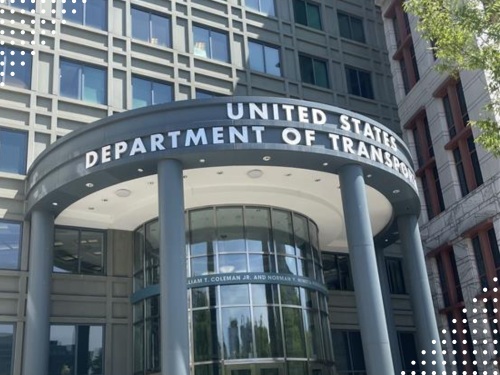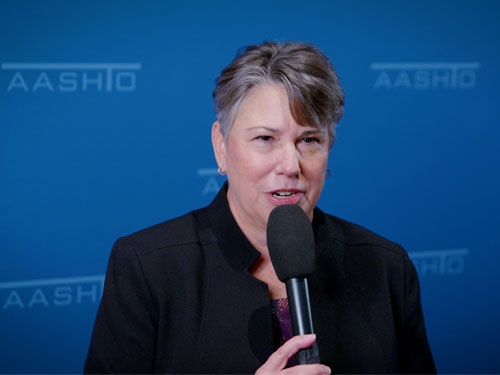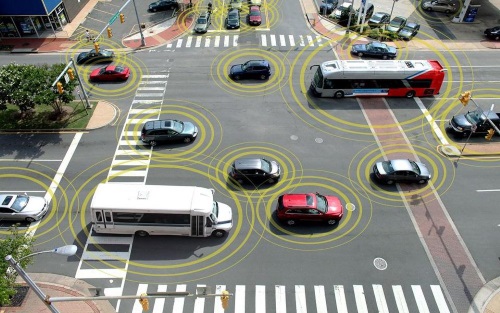The American Association of State Highway and Transportation Officials warned the Federal Communications Commission in a March 2 letter that permitting unlicensed devices to operate 5.9 gigahertz (GHz) wireless communication spectrum is “wrong and misguided” and will “put future safety and mobility improvements” at risk.
[Above photo via NHTSA.]
“Paramount to state DOTs is both eliminating the nearly 37,000 fatal vehicle crashes which occur on our roadways each year as well as the safe deployment of connected and automated vehicles,” the organization said in its 23-page letter. “Without the full 5.9 GHz spectrum available to use for connected vehicle technologies it will be significantly more difficult to eliminate these fatal vehicle crashes.”

In fact, the leaders of all 50 state departments of transportation, the District of Columbia, and Puerto Rico signed a letter to the FCC in August 2019 highlighting how critical it is to “continue our nation’s commitment to improving transportation safety” by reserving the 5.9 GHz wireless spectrum for transportation-only usage.
AASHTO also co-signed with 13 other organizations a separate letter sent to the FCC in November 2019 that, “with the tremendous potential to improve transportation safety and the growth in demand for vehicle-to-everything (V2X) services, it is essential that the entire 5.9 GHz band – all seven channels – be retained for V2X, and that all measures are taken to smooth the path for deployment.”

Despite those and other entreaties, the FCC voted unanimously in December 2019 to move forward with its effort to open up the 5.9 GHz wireless spectrum to non-transportation usage – a move even opposed by U.S. Department of Transportation executives, including USDOT Secretary Elaine Chao.
“We believe it is very important to retain this bandwidth [for transportation] and the department is actively advocating the FCC to do so,” she said during her keynote speech at the Transportation Research Board’s annual meeting in January.
AASHTO also noted in its March 2 letter that the FCC’s proposal would leave “insufficient bandwidth” for effective deployment of the planned safety applications, such as V2X, and will delay operational deployments such technology by a minimum of two years but likely much longer.
“Dedicated spectrum allocation assures sufficient bandwidth is available for the exchange of safety-relevant vehicle operations data; for example, in collision warning and avoidance applications,” AASHTO argued.
“The public safety benefits of those applications are present only if communications supporting them can assure delivery of messages within the 100-millisecond timeframes needed for vehicular control decisions,” the group said.
 Top Stories
Top Stories
USDOT Makes $1.5B Worth of BUILD Grants Available
December 19, 2025 Top Stories
Top Stories

